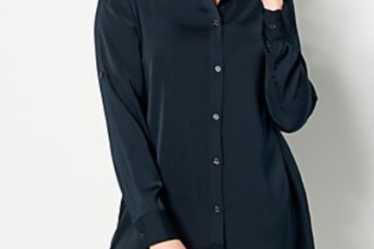
PARIS, France — Christian Dior’s back door entrance into the world of French high fashion was almost unique. In fact, the first 41 years of his life can be construed as those of a dilettante drifter — always on the edges of fashion and the arts but with nothing to presage the unprecedented flowering of the perfectly formed fashion statement of his first collection that seemed to have been plucked from the air. But, of course, it was neither as simple nor unexpected as that.
Christian Dior was born on 21st January 1905 in Granville, Normandy, where his family lived a comfortable bourgeois life supported by a successful fertiliser company. As a boy, he lived in his own little world, amused by “anything that was sparkling, elaborate, flowery or frivolous,” he wrote many years later, but his greatest love was for flowers and plants. Like so many couturiers, he adored his mother and her Belle Époque way of dressing was fixed in his memory forever. His father, in one of these misdirected actions that can often blight the career and even life of a son not understood, wished Christian to join the Diplomatic Corps. He was sent to study in Paris but, in probably the first example of what later flowered into a will of iron, Christian spent all his time on the fringes of the bohemian creative world of Jean Cocteau, Max Jacob, Salvador Dalí and, especially, Christian Bérard — the illustrator who was to play a significant role in the success of Dior’s first collection.
But before that, there were hurdles to be cleared. Dior appeared to be an intellectual lightweight dipping and diving into anything new and avant-garde, including politics: he briefly called himself an anarchist, even visiting communist Russia where he was repulsed by the totalitarian rule, poverty and lack of idealistic social structure. He also opened an art gallery, funded by his father, with the proviso that the family name should be not be used in connection with it. It was the sort of gallery where friends dropped in, stayed, but never bought — unaware that their presence might inhibit potential customers too nervous to spoil their fun by actually entering the premises.
It all came to an end with the Great Depression, which ruined his father and not only forced the closing of the gallery but also made it essential for Dior to find a way of earning a living, no matter how small. Even though he sold all the stock of the gallery — including Picasso and Braques – he lost his apartment and had to sleep on a friend’s floor — as John Galliano also did frequently in London in the ’90s before decamping to Paris and re-inventing the Dior image. Christian Dior’s dark days living rough and off a pauper’s diet resulted in him contracting tuberculosis and he had to have a year in convalescence.
So far, so failed, an observer of the time would have perhaps been justified in saying. But Dior was a survivor. With help from his friend Bérard’s contacts — although dirty and disreputable, he was the most respected and trusted man in Paris fashion, as well as being one of the great fashion illustrators of the century — Dior began to sell sketches of designs for hats to newspapers and eventually was offered a job with Swiss couturier, Robert Piguet. It was Dior’s first tentative step towards a serious involvement in fashion and it lead to a job in the design studio of Lucien Lelong, who — although more a businessman than a designer — employed young talents to produce ideas he then edited into a collection. In Lelong’s studio, Dior worked alongside Pierre Balmain.
He was drafted into compulsory farm work at the outset of war but returned to Paris in 1942 to work in haute couture, having rejected Balmain’s suggestion that the two of them should set up a couture establishment together. Instead, he took advantage of the great demand by German officers’ wives and the Berlin plutocracy for Paris couture. Dior’s ambition, which had laid fallow for so long, began to sprout into his own ideas for a business — ideas encouraged by Balmain’s triumphant opening of his eponymous house in 1945.
Marcel Boussac, a millionaire and industrialist known as “the cotton king of France,” had factories standing idle at the end of the war. He planned to buy a fashion house to create work that would keep the machines turning. He offered Dior the opportunity to revive a defunct house called Philippe et Gaston. Dior refused, saying that he was not interested in raising a company from the dead, but would be very interested in creating a completely new fashion house in his own name, as Balmain had so successfully done. Boussac agreed, put down a handsome sum and, at 41, Dior started his true career.
He did so with a stylish, confident hand, with everything about it reflecting his privileged early years, the education he had gleaned from associating with so many of the world’s greatest modern artists, and the fact that he was able to create a management team of some of the most elegant (and tough) women in French fashion, including Mitza Bricard, my favourite of all for the fact that she was the essence of Paris fashion. She totally understood the “right jewellery” to the point where, on the rare occasions when she left Paris, she always wore her “country jewels”: sapphires. And she was only one of a fabulous team of larger-than-life females with whom Dior surrounded himself.
The collection Dior offered an excited audience on the morning of February 12 1947 was an instant sensation and almost too accomplished for a very first fashion statement. In those days, Paris was a place of jealous whispers and underneath the genuine excitement that the sweeping skirts, tiny waists and padded hips introduced was the niggling question: how could someone with such a dismal track record pull off such a dramatic coup with clothes not unlike any ever previously seen, and every garment a confident, total statement of fashion authority not seen for years?
When I lived in Italy in the 70s, I met a very old man who had not only been part of the fashion world of Paris at the time of the “New Look,” he had also been an insider, and a great friend of Bérard and his lover, Boris Kochno. He always maintained — without demeaning Dior’s achievement — that the idea of the New Look (an expression almost certainly not coined by Carmel Snow, editor-in-chief of Harper’s Bazaar, despite the popular myth) had three sources: firstly, and perhaps most obviously, Dior’s memories of the elegant dress of his mother and her friends when he was a small boy, followed by the impact of the performance of the play; The Barretts of Wimpole Street, one of the last plays to appear on the Paris stage before the German Occupation. It and its costumes were remembered nostalgically during the war for the delicious femininity of the women’s long dresses, flattering hats and softly draped bosoms. But, my friend insisted, the real inspiration came from Bérard and the sketches he made, as he and Dior talked long into the night about what the new collection should say.
True or false? Who knows? Old men forget, but it is a fact that the night before the show, Bérard sat late in a bar with his cronies, drawing “from memory” virtually every dress in the collection.
Either way, the next 11 years were a seminal time for modern fashion. During that period Dior was, without question, the greatest couturier of all. But his legacy is much more than that. He changed the world’s perception of fashion — taking it from its previous role as an arcane pleasure for an endogamous tribe, to an interest for everyone, even including men. What I am saying is that in my view Dior, not Chanel or Balenciaga, invented modern fashion and the attitudes we now take for granted.
What I refer to as evidence is not only his sublime creativity but also his exceptional business aplomb, no doubt passed on through his father’s genes. Today, when the commercial side of a fashion house is equally, if not more important as the creativity, it is hard to imagine how revolutionary his approach to business was for those days. He set up a publicity machine that became a template for all who followed; he opened stores in New York and London; he wrote personal programme notes for the press and, along with Jacques Fath (who would have been the only one to rival him had he not died young), was the first to really understand the commercial value of the American market. In fact, unlike others, he took couture across the globe to places as far afield as Cape Town and Caracas, gathering on the way clients of the calibre of Eva Perón.
There was much luck in Christian Dior’s success — he was absolutely the right man for the right place at the right time. He gave back glamour and beauty to women starved of both during the war. He made it possible for all women to be fashionable. He was admired by contemporaries such as Balmain and Balenciaga, despised by Chanel (predictably enough her jealous little soul could not bear his success), and copied by designers everywhere.
Christian Dior died on a spa holiday in Italy. It was a heart attack bought on by his unhealthy eating habits, the world was told. Everyone knew he was a gourmand and a great lover of all things sweet.
Diana Vreeland’s pithy epitaph went: “Poor Christian, he died of the table.” Be that as it may, the company that Dior created is proving to be a structure in for the long haul, one that will probably never die. Christian Dior’s genes and the foundations he laid for his company were so spot on that there’s every reason to believe there will be a House of Dior as long as there is high fashion in Paris.




